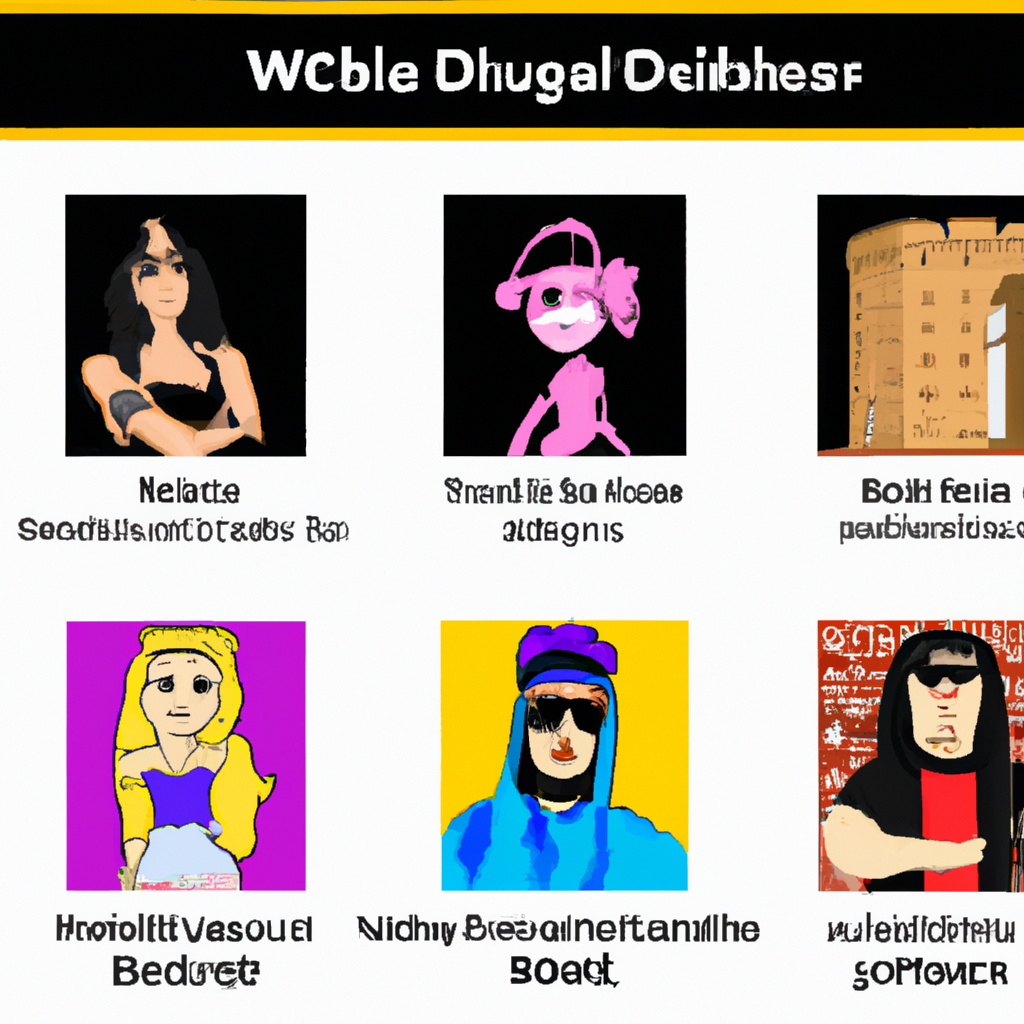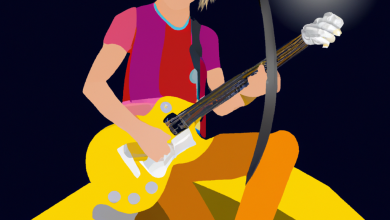
I. Introduction
Pop music has been a global phenomenon for several decades. It is a genre that has found popularity and fame among people all over the world. From America to Europe, it has created a revolution in the music industry. The term ‘pop’ is derived from the word ‘popular,’ and it refers to the music that is commercially viable and has a wide appeal. Pop music is known for its catchy melodies, easy-to-understand lyrics, and danceable beats that make it accessible to a wide range of audiences.
Brief History of Pop Music:
The history of pop music can be traced back to the late 1940s, when the first rock and roll songs became popular in the United States. Rock and roll music was a genre that combined elements of rhythm and blues, country music, and gospel music to create a unique sound. It was first popularized by singers like Elvis Presley, Chuck Berry, and Little Richard.
In the 1960s, the rise of the British Invasion changed the face of pop music. Bands like The Beatles, The Rolling Stones, and The Who brought a new sound to the genre, blending rock, pop, and folk music to create something entirely new. This music was characterized by catchy melodies, harmonies, and lyrics that were often about love and relationships.
In the 1970s, the disco era took over pop music. Disco music had an upbeat, danceable sound that was perfect for the dance floors of the era. Disco artists like Donna Summer, Bee Gees, and Chic became household names and topped the charts with their hits. The disco era also marked the first time that electronic synthesizers were used in pop music.
In the 1980s, MTV had a significant impact on pop music. Music videos became a crucial part of the pop music experience, creating a visual element to accompany the music. This gave artists like Michael Jackson and Madonna a new platform to showcase their talents.
The 1990s saw the emergence of boy bands and girl groups, like Backstreet Boys and Spice Girls, that became incredibly popular. These groups had a clean-cut image and catchy hooks and lyrics that appealed to young audiences. The era also saw the rise of alternative rock, grunge, and hip hop, which all had an impact on pop music.
In the 21st century, pop music has continued to evolve, but the rise of technology has changed the way we consume it. With the proliferation of streaming services, pop music has become more accessible than ever, and its reach continues to expand globally.
Conclusion:
In conclusion, pop music has undergone many changes over the years, but it has always had a global appeal. With its catchy hooks, danceable beats, and relatable lyrics, it continues to captivate audiences around the world. The rise of technology has only made pop music more accessible, and it seems likely that it will continue to influence the music industry for years to come.

II. Early Roots of Pop Music
Pop music has its roots in the blues and jazz music of the early 20th century. However, it wasn’t until the 1950s that pop music truly emerged as a distinct genre, particularly in America. Artists such as Elvis Presley, Chuck Berry, and Little Richard created hits that drew on the rhythms and melodies of the blues and jazz, but were infused with a youthful energy and sensibility that appealed to a wider audience.
In contrast, Europe didn’t embrace pop music until the 1960s. The British Invasion began in 1964 with the arrival of bands like The Beatles, The Rolling Stones, and The Kinks. These bands brought a new sound to pop music, blending British rock and roll with American rhythm and blues. The British Invasion sparked a wave of creativity across Europe and led to the emergence of numerous new groups and artists.
One of the key differences between early American pop music and early European pop music was the subject matter of their lyrics. American pop songs tended to focus on themes of love, heartbreak, and youthful rebellion, while European pop songs often addressed political and social issues of the time. For example, the French singer-songwriter Serge Gainsbourg wrote songs that tackled controversial topics such as sex and drugs, while British pop idol Dusty Springfield sang about the importance of civil rights and racial equality.
Despite these differences, there were also many similarities between early American and European pop music. Both shared a focus on catchy melodies and upbeat rhythms, as well as an affinity for experimentation and innovation. The success of American artists in Europe and vice versa helped to create a global pop culture phenomenon that continues to this day.
Overall, the early roots of pop music in America and Europe laid the foundation for the evolution of the genre over the coming decades. While the styles and influences would continue to change, the spirit of innovation and creativity that defined these early years remained at the heart of pop music both in Europe and America.
III. The Rise of Disco
The 1970s saw a significant shift in the popular music scene, as disco rose to prominence in both Europe and America. Disco music, characterized by its pulsing beat, funky bassline, and the addition of strings and horns, was an elaborately produced sound that quickly became a beloved staple of dance clubs and parties. It was a genre that celebrated hedonism and liberation, party-goers often dressed in costumes and dancing the night away to the latest hits.
How disco changed the face of pop music in the 1970s
Disco music’s widespread popularity impacted pop music significantly. Many artists from various genres, including rock, incorporated disco beats, and co-opted its elements. Bee Gees, a British band, is one of the most recognisable groups to fully embrace and hone the disco sound. Their album ‘Saturday Night Fever’ accompanied the similarly-titled movie, became a cultural phenomenon, marketed as a symbol of disco culture, and its influence on pop music style had a long-lasting effect.
The impact of disco on the European and American pop scenes
Disco had distinct effects on the music industry in Europe and America. In America, disco music, more often than not, was dance-driven with lyrics intended to be optimistic, happy, and carefree. At the same time, European disco had a strong backing of Euro-pop sound, complete with layered synthesized beats, unique sound effects, and catchy melodies that whirled a web of trance-like audio. This distinctness in the two regions allowed pop music to diversify further and create new sub-genres. However, Disco’s influence fizzled out towards the late 1970s in the US but remained prevalent in Europe.
In conclusion, the rise of disco music in the 1970s shook the pop music world, and its influence was evident in the evolution of pop music in Europe and America. Disco paved the way for the incorporation of bravado, style, and party anthems, which have continued to influence pop music today.
IV. The Influence of MTV
In the 1980s, music videos became a powerful tool for marketing and promoting pop music. With the advent of MTV (Music Television), music videos quickly gained popularity, and soon became an integral part of pop music culture. The music videos not only gave fans a visual representation of their favorite songs but also allowed artists to showcase their creativity and expand their brand.
The impact of music videos on pop music in the 1980s was enormous. In America, music videos were used to transform pop stars into household names. Big-budget music videos featuring elaborate sets, choreography, and extravagant costumes helped to create a cult of personality around some of the biggest pop stars like Michael Jackson, Madonna, and Prince. These artists used music videos to not only market their music but also to portray their unique styles and set fashion trends.
In contrast, Europe had a more mature music scene, with established pop stars such as ABBA and Queen already enjoying international success. Despite this, music videos were still a significant part of the pop music landscape in Europe. However, the approach taken in Europe was quite different from that in America. European music videos were less flashy and focused more on storytelling and conveying a deeper meaning behind the music.
The cultural differences between Europe and America also affected the way music videos were used. In America, music videos were often linked to consumerism, with major brands using them to promote their products, while in Europe, commercialism was less significant, and the focus was more on the music and the art of the video itself.
Overall, music videos were crucial in shaping the pop music landscape of the 1980s. They helped to pave the way for the rise of the music industry and establish pop music as a major cultural force. While the approach to music videos in America and Europe may have been different, their impact was undeniable, and they remain a vital part of pop music culture today.
V. The Birth of Boy Bands and Girl Groups
In the 1990s, a new phenomenon emerged in pop music – the birth of boy bands and girl groups. These groups were made up of young, attractive singers who were marketed primarily to teenage audiences. The members of these groups were often chosen for their looks and charisma rather than their musical ability, and they were choreographed to perform highly polished and very stylized dance routines.
The first boy band to rise to worldwide fame was New Kids on the Block. They were formed in Boston in 1984 and quickly became a sensation, especially among teenage girls. However, the real explosion of boy bands and girl groups came in the mid to late 1990s. Groups like the Backstreet Boys, NSYNC, Destiny’s Child, and Spice Girls dominated the charts and captured the hearts of millions of fans around the world.
The emergence of these groups had a profound impact on the pop music industry. They represented a shift towards manufactured pop, where the emphasis was on creating a brand rather than a musical style. Record labels invested vast amounts of money in marketing these groups, promoting them on TV, in magazines, and through music videos. Their appeal was not just about the music; it was about the whole package – the look, the style, and the image.
The popularity of these groups extended beyond their music. They became a cultural phenomenon, inspiring fashion trends, selling merchandise, and even influencing the way young people talked and behaved. In some cases, the members of these groups became household names, adored by fans for their good looks and personalities as much as their singing abilities.
Despite their manufactured image, these groups were often talented musicians with catchy pop songs that could get stuck in your head for days. Their music was designed to be catchy and accessible, with simple lyrics and memorable hooks. The songs were often uplifting, with themes of love, friendship, and empowerment that resonated with young audiences.
In conclusion, the birth of boy bands and girl groups in the 1990s had a significant impact on pop music. They were a cultural phenomenon, capturing the imaginations of millions of fans around the world. Although some critics dismissed them as manufactured pop, they represented a new wave of music that was all about style, image, and the whole package.
VI. Pop Music in the 21st Century
The 21st century has been marked by a significant shift in the music industry, thanks to the advent of technology. The emergence of music streaming services has changed the way pop music is consumed, produced and promoted. With the rise of streaming platforms like Spotify, Apple Music and Tidal, pop artists can now reach larger audiences across the world.
The impact of technology is also visible in the production of pop songs. With the help of digital audio workstations and other music software, artists can create and manipulate music in ways that were previously impossible. This has led to the creation of more complex and layered pop productions, with artists experimenting with different sounds and genres.
Another way that technology has affected pop music is through social media. Social media platforms like Twitter, Instagram and Facebook have given pop artists and their fans a direct line of communication. This has allowed pop stars to connect with their followers, build their brand and promote their music. Social media platforms have also created new ways for pop artists to market their music, from sponsored posts to viral challenges.
However, the impact of technology on pop music is not all positive. Streaming services have changed the way the music industry generates revenue, placing significant financial strains on artists and record labels. The shift towards streaming services has also changed the way that pop music is consumed, with singles often being prioritised over full-length albums. This has led to the rise of hit-driven pop artists who prioritise gaining streaming numbers over creating a cohesive body of work.
Despite these challenges, pop music remains a powerful and influential force in the 21st century. Pop artists continue to dominate mainstream charts across the world, with genres like hip-hop and EDM influencing the sound and style of pop music. As we move further into the century, it is likely that the relationship between technology and pop music will continue to evolve, creating new opportunities and challenges for pop artists and fans alike.
VII. Conclusion:
When comparing European and American pop music, there are many similarities and differences to be explored. One of the main similarities is the use of electronic and dance beats in current pop music. This can be seen in prominent artists such as Dua Lipa and The Weeknd who have consistently topped charts in both Europe and America.
However, different cultural influences and musical traditions have caused some differences between European and American pop music. European pop music has been influenced by genres such as Eurodance, which emerged in the 1990s, and Eurovision, which has been a major music event in Europe for over 60 years. American pop, on the other hand, has been influenced by genres like hip-hop, R&B, and country.
Another difference between the two is the way in which they approach the songwriting process. American pop often focuses on memorable hooks and catchy phrases, while European pop artists tend to put an emphasis on strong melodies and storytelling.
Furthermore, there have been noticeable differences in the way pop music is consumed in Europe and America. While CDs and physical music sales are still popular in some European countries, streaming services have become the primary mode of music consumption in America, with services like Spotify and Apple Music dominating the market. This has had an impact on the way music is produced and marketed, as artists often tailor their work to suit the demands of streaming algorithms and playlists.
As we look towards the future of pop music, it is clear that technology will continue to play a major role in shaping the industry. The growth of social media platforms like TikTok has made it easier for new artists to break into the mainstream, while artificial intelligence and machine learning technology is being used to create music that is tailored to individual tastes.
Ultimately, European and American pop music continue to evolve and adapt to changing tastes and technological advancements. While there may be differences in terms of style and production, both continue to captivate audiences around the world with their infectious melodies, catchy hooks, and memorable lyrics.



